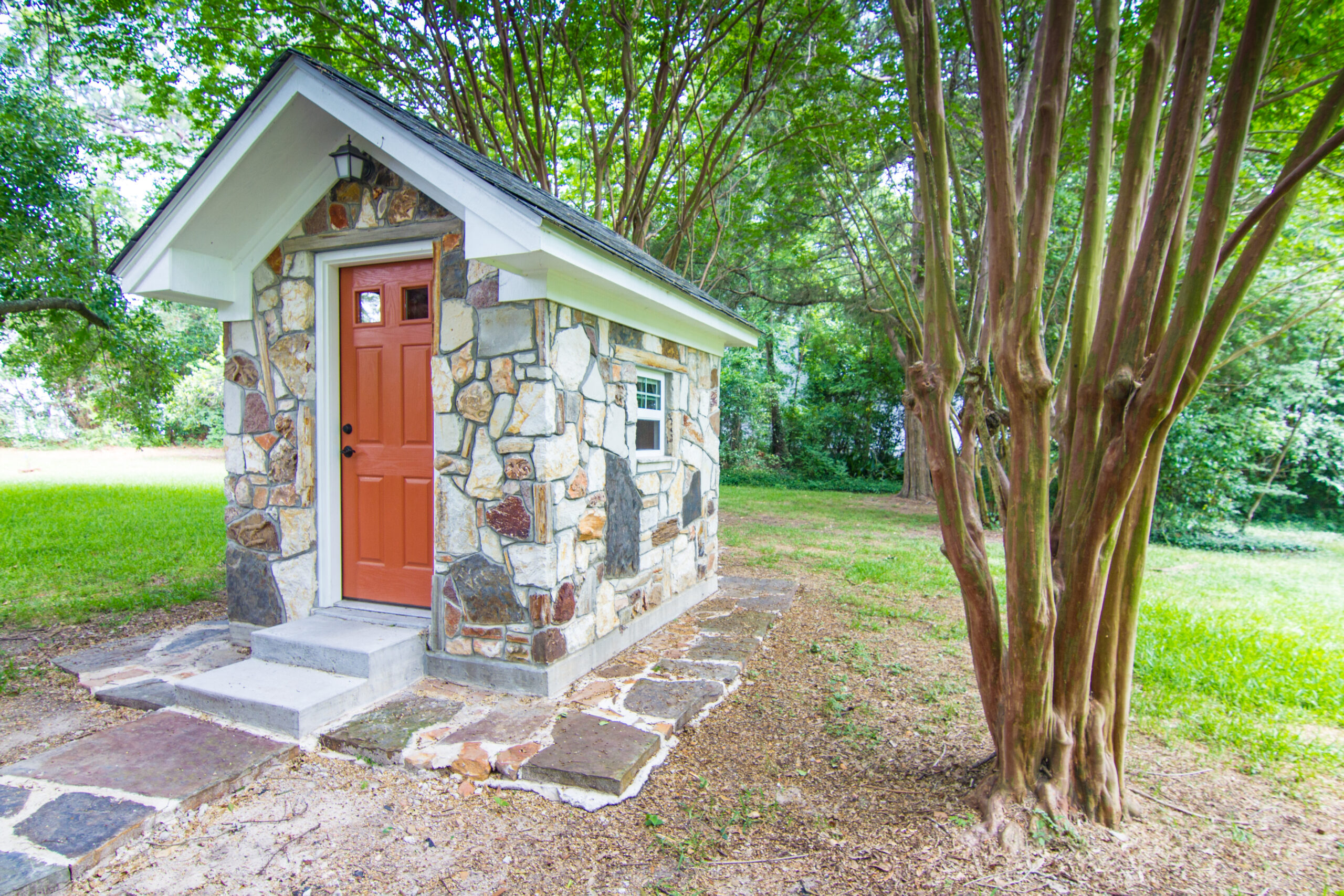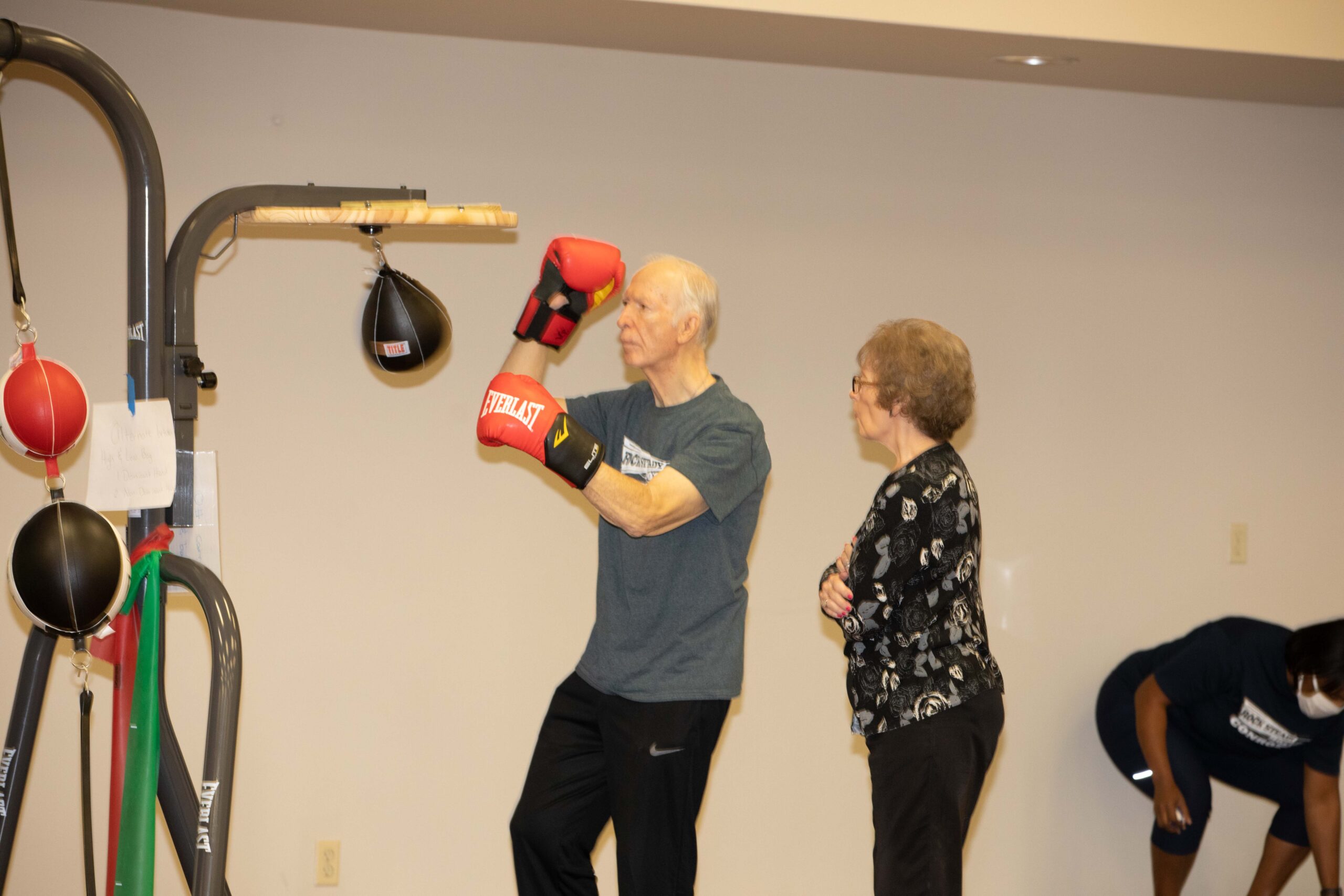
Sandford Gibbs and his wife Sarah Elizabeth, also known as Sallie, had the playhouse built for their first grandchild, Wilbourn Sandford, who later became mayor of Huntsville. Gibbs was a co-founder of Gibbs Brothers and Company in 1841. The company was a mercantile store which sold necessary items to residents, including General Sam Houston. After his death, Gibbs was survived by his five sons and wife, who took over the family business.
Wilbourn Sandford married Peggy and had a daughter, Margaret in 1935, who also played with the house. In the 1950s, when Margaret outgrew the playhouse and Sandford was selling the property, the playhouse moved for the first time when it was further passed down to Gibbs’ great-granddaughter, Mary Laura Gibbs, and her brother. Generations of neighborhood children and even animals have enjoyed the playhouse as well. At one point, the Gibbs family used the playhouse to house a Boxer whose owners could no longer care for the pet.
The playhouse remained at this location through various owners until 2019. Then the playhouse was moved for its final time when the owners wanted to change their yard and noticed the historical value in the playhouse. They knew the playhouse could not be destroyed, so they offered the playhouse back to Mary Laura Gibbs, who joyfully accepted it.
Gibbs has lived in her grandparents’ home since 1986. Her grandparents built the house in 1926, and her grandfather’s prized pine trees and grandmother’s magnolias are still growing in the yard and help shade the yard and playhouse. When her grandparents were residing at the home, farm animals, including chickens, a cow, and horses roamed in the yard. The house also functioned as a Sam Houston State University location for a home economics class once Gibbs’ grandfather died and the house was sold.
Measuring 6 ft. X 8 ft., the playhouse is made of stone with petrified wood placed sparingly between. Mary Laura Gibbs speculates the stone is from when the family was building something for Gibbs Brothers and Company, and she believes the stone is local to Huntsville. Grooves were made between the stones and wood to help them stand out. When looking closer, one can see the empty craters from where shells had once been buried in some of the stones. Many stones also contain igneous properties with sponge-like textures. A few pieces of marble were added, some to make the outside windowsills, which Mary Laura Gibbs acquired during the rebuilding of the playhouse from Grand Leader department store, once located on University Avenue.
The house was originally built with glass windows and a faux chimney in the back. It was also made, and continues to have, working electricity. Some of the original design has slightly changed. Cabinets that were built on an inside wall have since been removed. To make a stronger foundation, a concrete slab was added during the playhouse’s second move. A child-size door was also replaced with a regular-size door for easier access. Lastly, in order to better protect the house in the rain, a slate roof was built.
Inside, the concrete floors are painted to resemble checkered linoleum. Paneling on the walls are made partly from Parana Pine from Brazil, an endangered wood that has since been banned from exporting. The pine was brought from Mary Laura Gibbs’ parents’ house on Avenue O. A ceiling fan has been added, and a little wooden square table stands in the corner in front of an outlet. On top rests a candle and the remote for the ceiling fan. A mat and pillow rest on the floor for meditation practices.
When moving the first time from 11th Street, the house was moved in one solid structure. However, when moving the second time, the house was disassembled and rebuilt stone-by-stone. Mary Laura Gibbs compares this process to how William Randolph Hearst moved and rebuilt the San Simeon Castle in California, but in a miniscule way. In order for the house to be moved as such, photographs were taken from every side so the details would remain the same. The stones from each side were then placed on separate pallets and moved to the new location. It was decided to be moved this way because of the shape the house was in. Builders had concluded moving the playhouse in one piece would damage it.
“My brother shot the windows out with a BB gun, the door came loose from the hinges, and the roof got bad,” Gibbs said about the state of the playhouse before the move.
The state of the house just shows the many fond memories that were made during all the years of the playhouse’s life.
“I can remember being held in my grandmother’s arms and watching them put up the house, and I made a handprint in the steps.” Although those original steps were lost, Gibbs added her handprints again in 2021.
With these memories, the house contains emotional attachments as well.
“It was a part of our house. I remembered it being involved in things. It was like another room of the house, just not connected,” Gibbs said.
Another fond memory Gibbs has of the playhouse is being in girl scouts and becoming interested in batiste fabrics. She used the playhouse for melting wax on a hot plate to dye the fabrics. Looking back, she knows her mother would not be happy about this.
Gibbs has continued to take care of and upgrade the playhouse since receiving it. She now plans to add greenery around the base of the house. She also hopes to have a geologist examine the rocks making up the structure to determine the origin and age of them. Currently, she uses the playhouse for meditation, as she finds being in the house provides peacefulness.
“History only lasts as long as we take care of it,” she said when asked what has made her desire to keep and take care of the playhouse so strong. “My family has been here since 1841, and it’s nice to have something that looks back a little bit.”
Although she does not know what she wants the future to look like for the playhouse, Gibbs knows she wants it to be enjoyed by all.
“It is a minor souvenir of Old Huntsville, and I am delighted to think of others admiring it for years to come.”

Postcards Magazine
936-293-1188
PO Box 690
Huntsville, TX 77342
